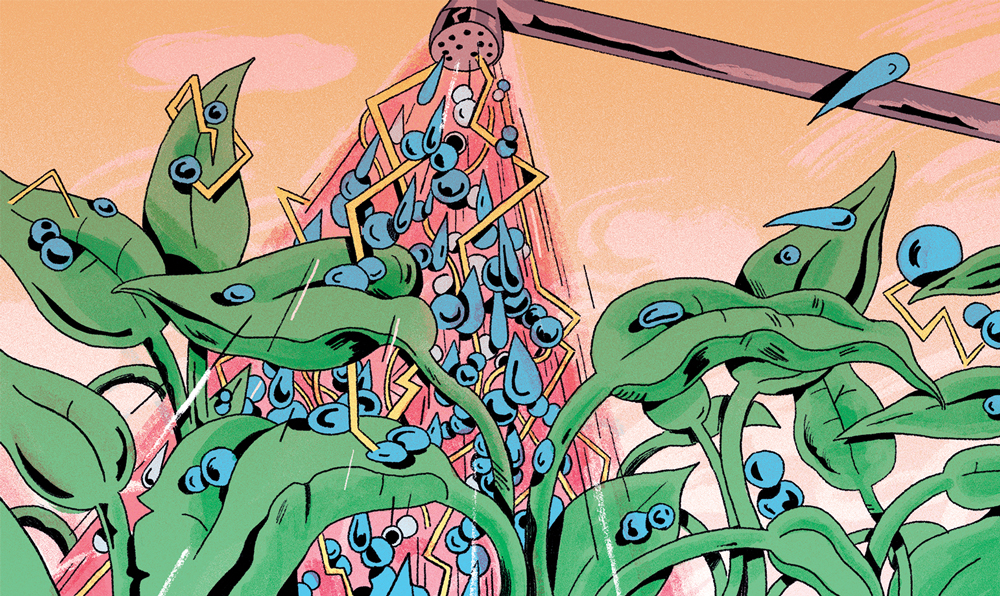
When farmers spray their fields with pesticides or orange growers spray water on their crops to prevent frost damage, only about 2 percent of the spray sticks to the plants. The rest of the droplets either bounce right back off the leaves or get blown away by the wind. All that waste costs money and, in the case of pesticide application, contributes to pollution of waterways and exposes farmers unnecessarily to hazardous chemicals. But a team of MIT researchers has found a way to fix that.
A clever combination of inexpensive additives allowed the researchers, led by associate professor of mechanical engineering Kripa Varanasi and grad student Maher Damak, to drastically cut down on the amount of liquid that bounces off, potentially making it possible to use just one-tenth as much pesticide or other spray as would otherwise be needed.
Previous attempts to reduce this droplet bounce rate have relied on additives such as surfactants, soaplike chemicals that reduce the surface tension of the droplets and cause them to spread more. But tests have shown that this yields only a small improvement; the speedy droplets bounce off while the surface tension is still changing, and the surfactants cause the spray to form smaller droplets that are more easily blown away.
The new approach uses two different kinds of polymer additives, each added to a separate portion of the spray. One gives its part of the solution a negative electric charge; the other causes a positive charge. When two of the oppositely charged droplets meet on a leaf, they form a hydrophilic (water-attracting) “defect” that sticks to the surface and makes other droplets more likely to adhere.
The project was developed in collaboration with the MIT Tata Center for Technology and Design, which aims to develop technologies that can benefit communities in India and throughout the developing world. Spraying of pesticides there is typically done manually with tanks carried on farmers’ backs, and since the cost of pesticides can be a significant part of a farmer’s budget, reducing the amount that’s wasted could improve the overall economics of small-scale farming. It could also reduce soil and water pollution and spare farmers excessive exposure to the spray chemicals. And for those spraying water, limiting the waste of often-limited freshwater resources can be significant.
“We can use normal sprayers, with two tanks at a time, and add one material to one tank and the oppositely charged material to the other,” Damak says. The farmer “would do everything as usual, just adding our solutions.”
Keep Reading
Most Popular
Large language models can do jaw-dropping things. But nobody knows exactly why.
And that's a problem. Figuring it out is one of the biggest scientific puzzles of our time and a crucial step towards controlling more powerful future models.
The problem with plug-in hybrids? Their drivers.
Plug-in hybrids are often sold as a transition to EVs, but new data from Europe shows we’re still underestimating the emissions they produce.
How scientists traced a mysterious covid case back to six toilets
When wastewater surveillance turns into a hunt for a single infected individual, the ethics get tricky.
Google DeepMind’s new generative model makes Super Mario–like games from scratch
Genie learns how to control games by watching hours and hours of video. It could help train next-gen robots too.
Stay connected
Get the latest updates from
MIT Technology Review
Discover special offers, top stories, upcoming events, and more.